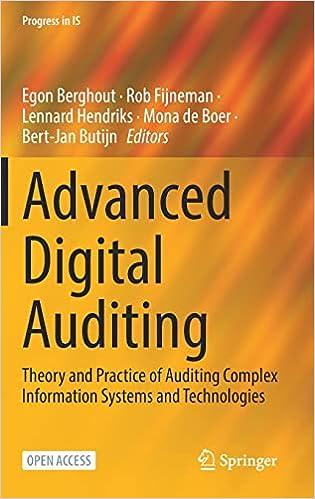The beginning inventory at Midnight Supplies and data on purchases and sales for a three month period ending March 31 are as follows: Date Transaction Number of Units Per Unit Total Jan 1 Inventory 2,500 $64.00 $160,000 10 Purchase 7,600 72.00 547,200 28 Sale 3,700 128.00 473,600 179,200 30 Sale 1,400 128.00 Feb. 5 Sale 500 128.00 64.000 10 Purchase 18,500 74.00 1.369,000 1,183,700 16 Sale 8.900 133.00 28 Sale 8,500 133.00 1.130,500 Mar 5 Purchase 15.000 75.60 1.134.000 14 Sale 10.000 133.00 1.330,000 25 Purchase 3.300 76.00 250,800 1,017.450 30 Sale 7.650 133 00 Instructions 1 Record the inventory, purchases, and cost of goods sold data in a perpetua inventory record similar to the one illustrated in Exit 3 using the first Birst-out method Instructions 1. Record the inventory purchases, and cost of goods sold data in a perpetual inventory record similar to the one Mustrated in Exhibit3 using the first-in, first-out method 2. Determine the total sales and the total cost of goods sold for the period. Journalize the entries in the sales and cost of goods sold accounts Assume that all sales were on account and date your journal entry March 31. Refer to the Chart of Accounts for exact wording of account titles. 3. Determine the gross profit from sales for the period 4. Determine the ending inventory cost as of March 31. 5. Based upon the preceding data, would you expect the ending inventory using the last-in first-out method to be higher or lower? CHART OF ACCOUNTS Midnight Supplies General Ledger ASSETS REVENUE 110 Cash 410 Sales 111 Petty Cash 610 Interest Revenue 120 Accounts Receivable 131 Notes Receivable EXPENSES 132 Interest Receivable 510 Cost of Goods Sold 515 Credit Card Expense 141 Inventory 145 Office Supplies 516 Cash Short and Over 146 Store Supplies 151 Prepaid Insurance 181 Land 191 Office Equipment 192 Accumulated Depreciation Office Equipment 193 Store Equipment 194 Accumulated Depreciation Store Equipment 520 Salaries Expense 531 Advertising Expense 532 Delivery Expense 533 insurance Expense 534 Office Supplies Expense 535 Rent Expense 536 Repairs Expense 537 Selling Expenses LIABILITIES 20 CM 181 Land 532 Delivery Expense 533 Insurance Expense 534 Office Supplies Expense 191 Office Equipment 192 Accumulated Depreciation Office Equipment 193 Store Equipment 194 Accumulated Depreciation Store Equipment 535 Rent Expense LIABILITIES 536 Repairs Expense 537 Selling Expenses 538 Store Supplies Expense 561 Depreciation Expense-Office Equipment 562 Depreciation Expense-Store Equipment 590 Miscellaneous Expense 210 Accounts Payable 221 Notes Payable 222 Interest Payable 231 Salaries Payable 241 Sales Tax Payable 710 Interest Expense EQUITY 310 Common Stock 31 Retained Earnings 312 Dividends Date Purchases Date Quantity Unit Cost Total Cost Quantity Jan. 1 10 10 28 28 ull 30 Feb. 5 10 S 10 16 16 28 Mar. 5 S 5 14 14 25 25 Cost of Goods Sold Quantity Unit Cost Total Cost Quantity S ol $ $ $ $ $ $ S $ $ $ $ lllll $ $ $ s $ www S S $ $ 5 S 5 $ Inventory Total Cost Quantity Unit Cont Tatal Cost $ $ $ $ $ $ $ $ $ $ $ $ $ $ $ $ $ $ $ $ $ $ $ 5 $ $ $ S $ S $ S S S S S eBoch SW.Me HOW 20 TV 28 30 Feb. 5 10 $ $ 10 16 16 28 Mar. 5 $ $ 5 5 14 14 25 25 30 30 31 Balances $ $ $ s S $ $ S $ $ $ $ 5 $ $ $ s $ $ $ $ S IS 5 S $ $ $ $ $ $ $ $ $ $ $ $ $ $ $ GA $ $ $ li $ $ $ $ $ S $ S Journal 2. Determine the total sales and the total cost of goods sold for the period. Journalize the entries in the sales and cost of goods sold accounts. Assume that at sale account and date your journal entry March 31. Refer to the Chart of Accounts for exact wording of accounts JOURNAL DATE DESCRIPTION POST REF DEBIT CREDIT ACCUEVIATH ASSETS LATIE Final Questions 3. Determine the gross profit from sales for the period. 4. Determine the ending inventory cost as of March 31. 5. Based upon the preceding data, would you expect the ending inventory using the last in first-out method to be higher or lower? Lower Higher


















